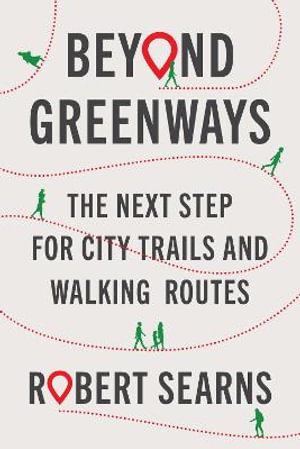
PublishedIsland Press, July 2023 |
ISBN9781642832631 |
FormatSoftcover, 288 pages |
Dimensions22.9cm × 15.2cm |
If your doorstep were a trailhead, how would you experience your city? With this newfound freedom, you might head in a new direction, walk to a restaurant in an area you've never explored, begin to savour your daily walk to work, or set out with a daypack to the city edges for fresh air and nature.
Despite the known health benefits of routine walking, many people don't have pleasant, safe places to walk. Too often, street networks have barriers - cul-de-sacs, freeways, or busy, dangerous-to-cross, arterials. Many lack sidewalks at all. There is a clear need for high-quality, readily accessible pedestrian infrastructure in and around urban areas.
In Beyond Greenways: The Next Step for City Trails and Walking Routes, greenways expert Robert Searns makes a case for walking infrastructure that serves a more diverse array of people. He builds on the legacy of boulevards, parkways, and greenways to introduce a next generation of more accessible pathways, wide enough for two people to stroll together, that stitch together urban and suburban areas. With more trails built near neighbourhoods that haven't had access to them, more people can get around on foot, in town or further out. Searns lays out practical advice on how to plan and design them, garner community support, and get them built. Drawing inspiration from the US and abroad, he introduces two models - grand loop trails and town walks. Grand loop trails are regional-scale, 20 to 350-mile systems that encircle metro areas, running along the edges where city meets countryside. Town walks are shorter- 2 to 6-mile routes in cities.
Throughout, Searns presents examples that embody these ideals, from Tucson's Turquoise Trail, created by just two people with an idea and some left-over blue paint the city had, to a more deluxe 5-mile loop in Denver, to the Louisville Loop Trail in Kentucky, a nearly complete 100-mile grand loop. He also envisions these trails in new places across North America.
Planners, trail advocates, community leaders and those who just want closer-in places to hike or walk will find the tools they need to develop successful and affordable plans, including how to envision them to fit various settings and strategies for implementation. Now is the time to think beyond greenways, to pursue a legacy of accessible pedestrian routes for this, and future, generations.

